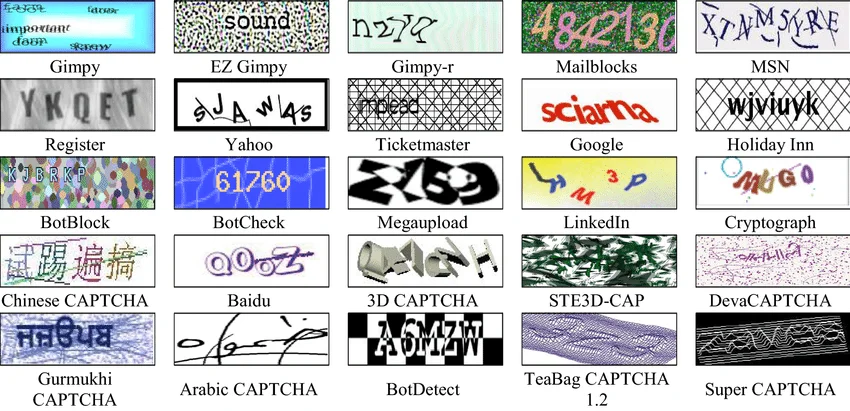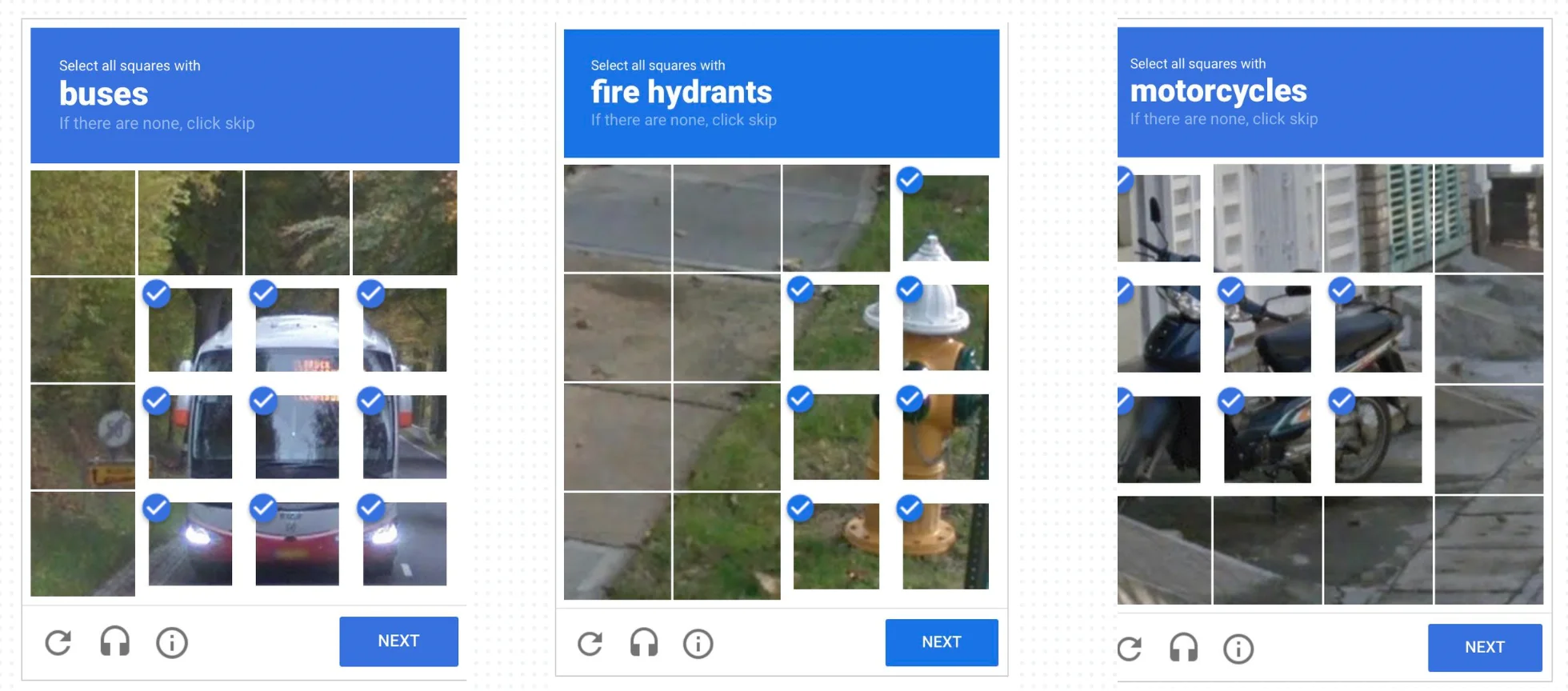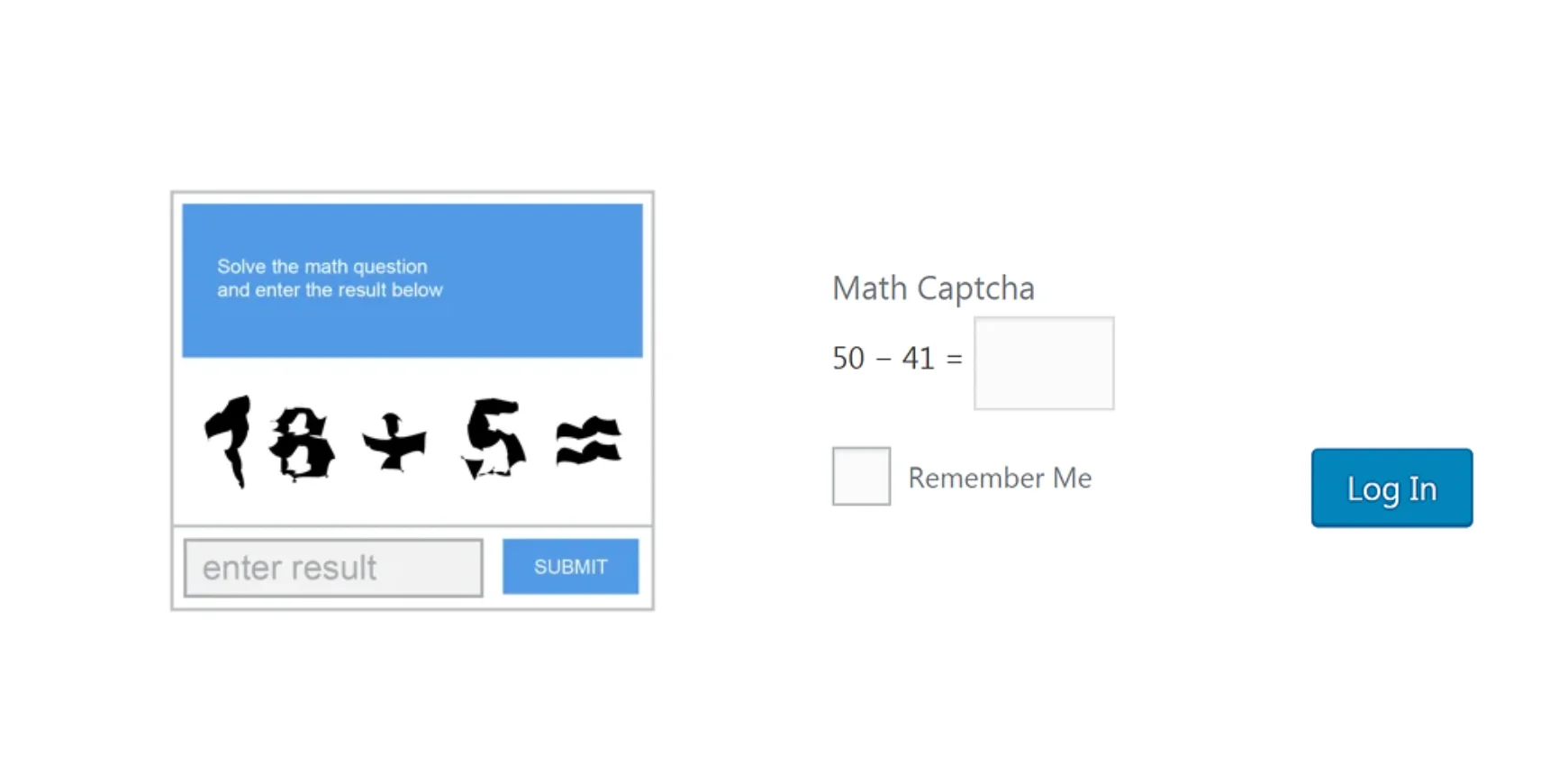
In this Article
You’re about to visit a website, but suddenly a CAPTCHA pops up asking you to find all the bicycle images or solve a puzzle. You may think what an irritating pause, but in reality such tests are designed to secure a website by blocking bots. CAPTCHAs come in many forms – image selections, typing distorted text, or even quizzes.
If you’re looking for ways to bypass them, you’ll need to use the right methods and resources. In this article, we’ll guide you through the types of CAPTCHAs and the most appropriate techniques you can use to get over them.
CAPTCHAs and their types
CAPTCHA (Completely Automated Public Turing test to tell Computers and Humans Apart) is a special test used to prevent various bots and automated systems from pretending to be human and performing tasks such as:
- Creating accounts automatically;
- Subscribing to offers;
- Collecting and generating fake email addresses;
- Password cracking attempts;
- Sending spam emails or messages.
This verification can be a simple puzzle or visual test designed to be easily solved by humans but not by automated programs. It often includes distorted letters, numbers, or images on complex backgrounds to prevent bots from recognizing them. Many CAPTCHA schemes have been developed over the years. The reason is that many schemes have been found to be vulnerable to automated attacks. As a result, developers wanted to create stronger alternatives. Here are the 5 main types of CAPTCHAs.
-
Text-based CAPTCHAs
Text-based CAPTCHAs are a standard online security measure where users must identify and enter letters to verify they’re not bots. The characters in the CAPTCHA are often presented in distorted ways, including scaling, rotation, and other alterations. Additionally, graphic elements like color variations, background noise, lines, arcs, or dots are often incorporated to provide stronger protection against bots.
While these techniques help improve security, they can make things harder for users. In particular, improper use of color and background textures can weaken security if automated programs can easily separate the text from the background. If not done carefully, these elements may make the CAPTCHA harder for users to read.
-
Image-based CAPTCHAs
Image-based CAPTCHA tends to be more popular and easier to understand than a text-based one. These CAPTCHAs are more challenging for bots because they require image recognition and semantic or context understanding.
Some developers say it’s better to use text-based CAPTCHA. For instance, image-based CAPTCHAs can take up too much space on a webpage. It can lead to a poor user experience for visitors on low-bandwidth connections. Some images may not align with the overall aesthetic of a website which can also cause confusion. Creating an effective image database for CAPTCHAs can be time-consuming. The best solution is to use a simpler approach with a limited selection of images. What do you think about it?
-
Audio-based CAPTCHAs
Audio-based CAPTCHA is based on the human ability to depict sound that may be distorted. They can be mixed with text or image-based CAPTCHAs. This type of CAPTCHA uses voice recognition technology. This technology relies on machine learning to analyze voice patterns like pitch, tone, and rhythm to check if the audio comes from a real person. Audio-based CAPTCHAs can also pose challenges for both users and bots in terms of interpretation.
-
Word Problems
Word Problem is a type of CAPTCHA that presents users with simple math questions or word tasks to solve. For example, users might be asked to type a word in all capital letters, select the last word from a list, or identify a color associated with a specific word. Users must carefully follow all the instructions. A key advantage of this CAPTCHA is that it is helpful for users who are visually impaired and may have trouble with visual tasks.
-
No CAPTCHA reCAPTCHA
reCAPTCHA is a free service provided by Google. It includes an invisible CAPTCHA that requires no user input. Google has enhanced reCAPTCHA’s features over time, moving away from the classic method of using distorted text. The service now offers various tests, such as image recognition, checkboxes, and assessments of user behavior without any interaction. For example, some tests ask users to check a box labeled “I’m not a robot,” but the real test is based on the user’s mouse movements leading to that action, as human movements have random patterns that bots can’t replicate.
How does a CAPTCHA work
The idea of CAPTCHAs is that a bot or a computer program will fail to interpret the distorted letters/image/puzzle. In contrast, a human, who knows how to view and understand different fonts, handwriting styles, backgrounds will be able to recognize them. For many internet users, solving a CAPTCHA and continuing browsing may not seem like a big issue.
However, individuals involved in automation, load testing, or data parsing, should know different CAPTCHA types to save their time. Being able to bypass CAPTCHAs is crucial for:
- automators who aim to streamline repetitive tasks;
- testers responsible for evaluating web security;
- developers who gather data.
Let’s find out some ways to bypass CAPTCHAs.
Ways to bypass CAPTCHAs
1. Proxy Rotation and IP Management
Proxy rotation uses multiple IP addresses to manage web requests. It helps to avoid detection and CAPTCHA prompts. When users switch between different proxies, the target website stops noticing patterns that might show bot activity, like too many requests from one IP address. This strategy is even more effective when mixed with extra geolocation targeting offered by DataImpulse. As a result, using a reliable residential proxy to change your IP address is one of the simple ways to bypass CAPTCHA tests.
2. Browser Automation and Human Behavior Simulation
You can try libraries from Python or Node.js. They simulate real user behavior such as mouse movements and scrolling. For example, Selenium is aimed at browser automation, but it can be combined with CAPTCHA solvers (like 2Captcha) during web scraping. This method is especially helpful for tricky CAPTCHAs that analyze user behavior. It makes the CAPTCHA system believe the request is from a real person, and then automated scripts go through without any issues.
3. Optical Character Recognition (OCR)
OCR technology helps analyze and interpret CAPTCHA images with distorted text. It transforms visual information into a format that computers understand. Machine learning is used in advanced OCR methods to improve their flexibility. OCR works well for standard CAPTCHAs, but it can have difficulties with more complex ones. All in all, it’s better to combine this technology with other techniques.
4. Cookie Analysis
Cookie analysis is about managing browser cookies to keep active user sessions. Understanding how websites use cookies to track user actions allows automation tools to send appropriate cookies with requests to imitate real users. Maintaining consistent sessions and minimizing sudden behavior changes can help avoid triggering CAPTCHA checks. Managing cookies properly can help bypass CAPTCHAs and improve automated interactions with websites.
5. Captcha Solver Service providers
The process of using a CAPTCHA solver is simple. When your bot faces a CAPTCHA, you submit it to the service’s API, where either automated tools or a person solves it. After signing up and linking the API to your tool, you’ll forward the CAPTCHA, and the service will send back the solution so you can keep scraping without problems.
- 2Captcha – a popular service that is focused on a human-powered approach. They also have code examples for automatically solving reCAPTCHAs using tools like Selenium and Puppeteer. The setup process is easy, using APIs compatible with multiple programming languages.
- CapSolver – an AI-powered service that works with multiple proxy types so users can manage their CAPTCHA-solving processes across several IP addresses. This platform minimizes delays, making it a great choice for companies seeking precise scraping tools. It’s also an affordable solution, with a trial plan. If you’d like to learn more about this service, read this article.
- BypassCaptcha – a professional CAPTCHA decoding platform since 2008. Their service has an average 8 to 13 seconds bypass delay. BypassCaptcha is simple to implement in scripts and works with languages like Ruby, Python, and JavaScript. Input the Captcha data into the API, and you’ll receive quick results, solving Google V2 and V3 reCAPTCHAs. It is also compatible with both datacenter and residential proxies.
Conclusion
Summing up, CAPTCHA is an important barrier against spam, hacking, and password theft. CAPTCHAs help computers check if a user is human to improve website security, but they can frustrate users, be hard to use, may not work on all browsers, and create problems for people using screen readers.
To bypass CAPTCHA, methods like proxy rotation, browser emulation, OCR, and cookie analysis help automate tasks by imitating human behavior. One of them is proxy rotation which avoids detection by spreading requests among various IP addresses. At DataImpulse, users can try premium residential, datacenter, and mobile proxies with a budget-friendly pay-as-you-go model. They can benefit from custom solutions, 15+ million IPs from 194 locations, fast connections, and more.
To get more info, “Try now” or contact us at [email protected].
*This article is purely for educational purposes. Always proceed with caution, follow ethical guidelines, and respect website terms of service to avoid legal issues or harming online systems.





